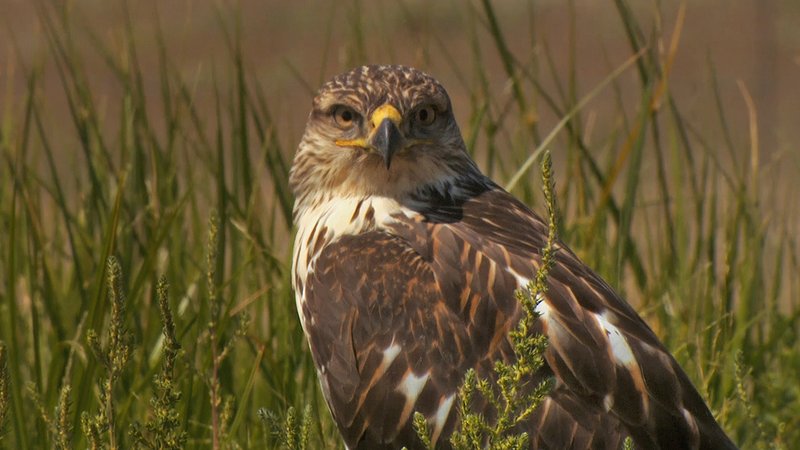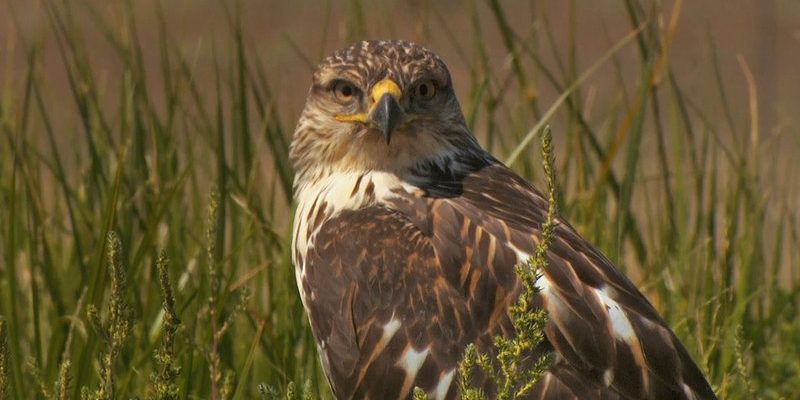
Ferruginous hawks are primarily found in open grasslands, deserts, and shrublands. Their ability to adapt to different terrains and climates is simply impressive. You might wonder what makes them different from other hawks or how they manage to find food and shelter. Here’s the scoop: these birds have developed unique strategies that allow them to hunt effectively and nest comfortably. In this article, we’ll explore their physical traits, hunting techniques, nesting habits, and how these factors all contribute to their overall adaptability.
Physical Characteristics That Aid Adaptation
Ferruginous hawks are quite large compared to other hawks. With a wingspan that can reach up to 4.5 feet, their size helps them soar effortlessly in search of prey. But it’s not just their wingspan; their distinctive plumage plays a crucial role in their adaptation as well. The rich, rust-colored feathers on their backs provide excellent camouflage against the reddish soil of their preferred habitats. This natural disguise helps them blend into their environment, making them less noticeable to both prey and predators.
Their physical prowess doesn’t stop at feathers and wings. These hawks have strong, sharp talons and beaks designed for tearing into flesh. This makes them efficient hunters, allowing them to catch various prey, including rabbits, rodents, and even other birds. When you think about it, having powerful tools is essential for survival, whether you’re a hawk or a human trying to get the job done. That said, their food sources can vary significantly based on where they live, adding another layer to their adaptability.
Another fascinating trait? Ferruginous hawks can change their plumage slightly in response to seasonal shifts. During winter, they might adopt a more muted color palette. This change not only affects their hunting strategy but also ensures they don’t stand out against a snowy backdrop. So, just as we might wear warmer clothes in colder weather, these birds change their appearance to suit their needs.
Hunting Techniques
The hunting tactics of ferruginous hawks are truly something to admire. These birds are primarily sit-and-wait hunters, meaning they often perch quietly in high places, surveying the ground for movement. This method is highly effective, especially in their open habitat where visibility is excellent. You might be surprised to learn that their eyesight is much better than ours, allowing them to spot potential prey from great distances.
Once they identify a target, they swoop down with incredible speed and precision. But here’s the interesting part: they’re not just relying on speed. Ferruginous hawks also adapt their hunting techniques based on the terrain. For example, in areas with heavy vegetation, they might employ a more stealthy approach, moving slowly and quietly to surprise their prey. Imagine stalking through a field, trying to spot a hidden rabbit—that’s the kind of patience and skill these hawks need.
Sometimes, they even hunt alongside other birds. This cooperative hunting style allows them to corner prey more effectively. They’ll work with other raptors or even use distractions—like chasing smaller birds—to make it easier to capture their meal. It’s a great example of how teamwork can enhance survival chances, whether in the animal kingdom or our own lives.
Nesting Habits and Adaptability
Finding the right place to nest is crucial for ferruginous hawks, and they are quite adaptable in their choice of locations. They typically prefer to build nests on tall structures, whether that’s a sturdy tree, a power pole, or a rocky outcropping. By choosing these elevated spots, they ensure safety from ground predators while maintaining a commanding view of their surroundings.
Their nests are impressive, often composed of large sticks, grasses, and other materials. You might think of them as architects of the avian world, crafting homes that can weigh up to 200 pounds! This hefty structure isn’t just for show; it provides insulation and protection for their young. Plus, the nests can be reused and added to over the years, making them not only a home but a part of their legacy.
Interestingly, the adaptability of ferruginous hawks extends to their nesting behavior. They can lay anywhere from 1 to 7 eggs, depending on environmental conditions like food availability. In years with abundant prey, they might have larger clutches, ensuring a stronger chance of species survival. It’s a bit like preparing for a big event—when the time is right and conditions are favorable, they go all in.
The Role of Environment in Their Adaptability
Environmental factors significantly influence how ferruginous hawks adapt. For instance, changing weather patterns can affect their food sources. During droughts, prey might become scarcer, prompting these hawks to travel farther to find meals. Their ability to cover vast distances in search of food is a testament to their adaptability. They can easily adjust their hunting territories and strategies based on what their environment provides.
Additionally, these hawks are known for their impressive endurance. They can fly long distances without tiring, which is essential when food is hard to come by. Imagine being on a long road trip with no gas stations in sight—that’s what it’s like for them when their food sources dwindle. Instead of giving up, ferruginous hawks simply adapt their routes and hunting patterns.
Even the presence of humans can impact their behavior. While habitat destruction poses a threat, some ferruginous hawks have learned to thrive near agricultural areas. They can take advantage of increased rodent populations in farm fields. This ability to exploit new opportunities is a great example of how adaptable these birds can be, showcasing their resilience in the face of change.
Conservation and Future Adaptability
As with many species, ferruginous hawks face challenges from human activity and environmental changes. Habitat loss and pesticide use can threaten their population numbers. But there’s good news! Conservation efforts are in place to help them adapt and thrive in changing environments. For example, initiatives to restore grassland habitats can bolster their chances of survival.
Organizations working to protect these magnificent birds focus on educational programs and habitat restoration projects. By raising awareness about the importance of preserving ecosystems, they’re not only helping ferruginous hawks but many other species that share their habitat. It’s a bit like planting a tree: you might not see its full growth in your lifetime, but you’re making a difference for future generations.
In addition to habitat conservation, researchers are studying these hawks to better understand their behaviors and adaptability. By tracking their movements and gathering data, scientists can identify trends that inform conservation strategies. After all, knowledge is power, and the more we know about these birds, the better equipped we are to help them.
Ferruginous hawks are remarkable creatures that demonstrate incredible adaptability in their environments. From their impressive hunting techniques to their strategic nesting habits, they show how nature can find a way to thrive despite challenges. The way they adjust their behaviors, blend into their surroundings, and even cooperate with other birds speaks to their resilience.
As we continue to explore and understand these magnificent birds, it’s crucial to support conservation efforts aimed at protecting their habitats. After all, preserving the spaces they call home benefits not just ferruginous hawks but the entire ecosystem. Next time you spot one of these stunning raptors, take a moment to appreciate its journey—one shaped by adaptability, resilience, and a deep connection to the environment.

